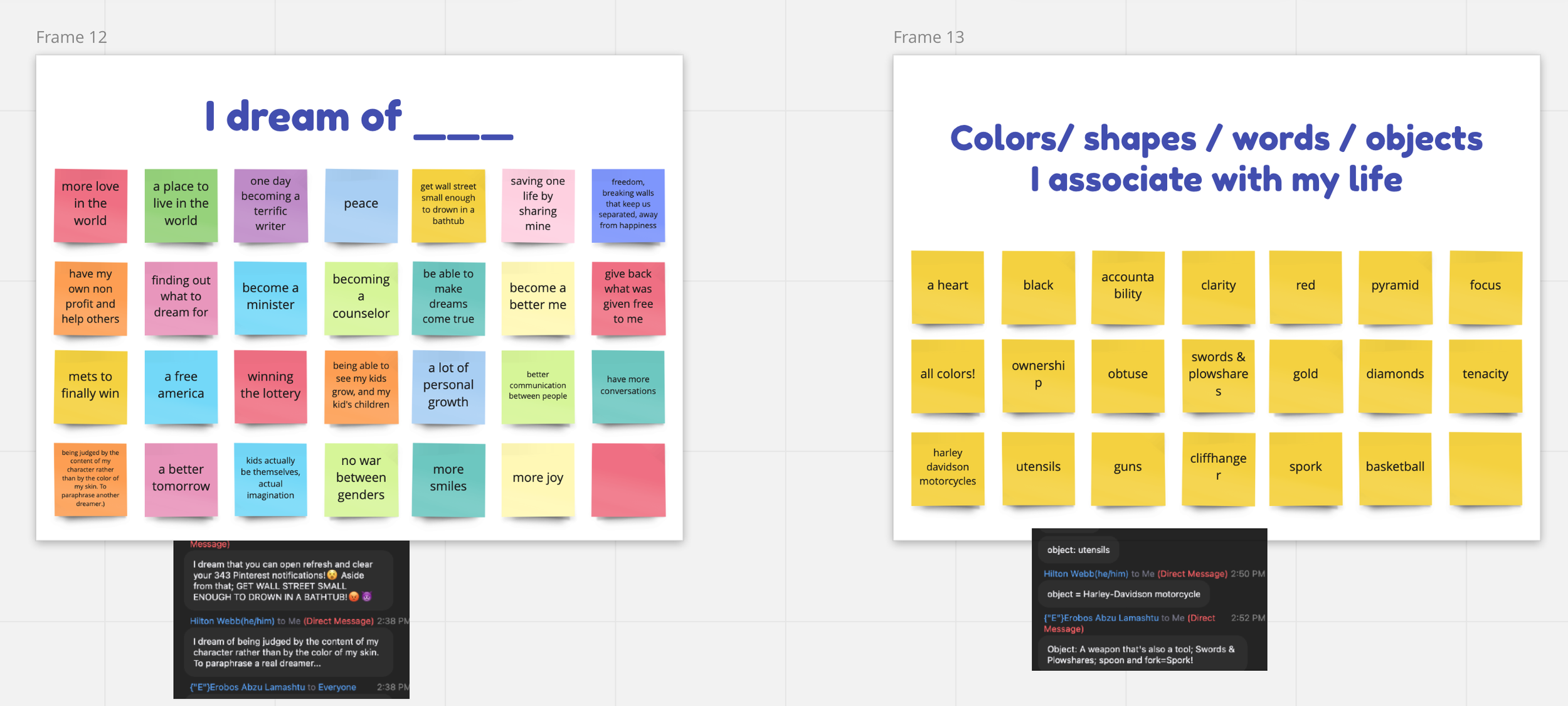We Are More Than A Label
A zine that invites to use humanizing - person-first - language when talking about community members who have been affected by the criminal legal system.
Partner: The Creative Arts Program at The Fortune Society
Year: 2021
Team: Jamie Maleszka & members of the Creative Arts Program at The Fortune Society
Background
I became part of the arts community at The Fortune Society through our collaboration on Art Portal. That project offered valuable insights into the hopes, challenges, and needs of its members.
One key takeaway was the community’s strong desire to “change people’s minds”, and “Change the perception from you are “just a felon to you’re valuable”".
Shortly after the launch of Art Portal, and recognizing the profound impact of language in shaping perceptions, expanding or limiting imagination, and influencing lived experiences, we collaborated once again—with members of the community—to co-create a resource aimed at raising awareness about the language used when referring to individuals impacted by the criminal legal system.
How Might We create an accessible resource that raises awareness about the impact of word choice/use, and adds to the efforts to humanize community members with justice histories and reduce social stigma?
Tools & Methods
-

Empathetic Listening
This work began with Art Portal, where empathetic listening was key to building trust and understanding. It allowed me to learn about the community’s lived experiences, joys, and struggles.
-

Alignment & Consensus
We moved beyond general observations to reach clarity and alignment around our goals. Through open discussion, all voices were heard, and we arrived at a shared vision for the project.
-

Participatory Desing
I facilitated co-creation workshops in which every participant contributed meaningfully and enthusiastically. Their insights and creativity directly informed the concept, tone, and content of the zine.
-

Prototyping & Iterating
I translated ideas into visual concepts and printable elements, using sketches, paper prototypes, content outlines, and mockups. Feedback was gathered throughout the process to refine the final design.
Process
In my public presentation of Art Portal, I spoke about the importance of using humanizing language when referring to the individuals I collaborated with throughout the project. I highlighted how terms such as “felon,” “criminal,” and “inmate” are not only harmful but also reinforce the social stigma faced by people impacted by the criminal legal system.
Later in the presentation, I shared quotes from community members expressing their desire to be treated with dignity, to “show people we are more similar than different,” and to live free from the burden of stigma.
To conclude my presentation, I shared the long-term vision for Art Portal—to serve as a platform for raising awareness about the impacts of mass incarceration and the carceral state, and ultimately, to transform the way society views and treats those affected by these systems.
Following the presentation, the Director of the Creative Arts Program approached me with the idea of developing an additional resource aligned with that vision—a tool specifically focused on the power of language and the importance of intentional word choice.
Given my background in book, print, and editorial design—and my interest in risograph printing—we envisioned the project as a riso-printed zine. We introduced the idea to the community, who responded with both enthusiasm and a wealth of ideas and questions.
I designed and facilitated a co-design workshop where we set our shared values and group norms, discussed participants’ goals for the publication, and explored themes of identity, dignity, and aspiration.
Based on those conversations, I began translating complex ideas into visual elements suitable for print. I made deliberate choices—such as preserving participants’ words verbatim and incorporating their aesthetic preferences—while working within the constraints of risograph printing.
In a second workshop, I presented the proposed art direction, along with sketches and mockups, and opened the space for feedback.
From there, the process became a collaborative cycle of refinement. We worked together through multiple rounds of edits until we arrived at a final product that the entire group felt proud of.
Outputs & Outcomes
After several rounds of iteration, the final design was printed at Lucky Risograph, a local, BIPOC-owned risograph studio. A first edition of 750 copies was completed just in time to be featured in We Choose to Bloom, an exhibition by the Creative Arts Program at MoMA PS1’s Homeroom. The zines were distributed free of charge—offered as both a takeaway and a discreetly educational artifact of the exhibition.
The community members who co-created the zine expressed pride and satisfaction in both the collaborative process and the final outcome.
A second print run of 750 copies followed a few months later. As of Spring 2024, the zine has been distributed through The Fortune Society, MoMA PS1, Socrates Sculpture Park, Second Stage Theater, and Columbia University's Beyond Bars conference. It has also been shared with sister organizations, arts institutions, legislators, funders, and other key stakeholders.
In partnership with Second Stage, copies were mailed to high school students affiliated with the nonprofit Exploring the Arts and the School for Social Justice in Long Branch, NJ.
Digital files for online access and print-ready versions are available here.




























